|
Ashtanga Yoga Invocation
om vande gurunam charanaravinde sandarsita svatmasukhava bodhe nihsreyase jangalikayamane samsara halahala mohasantyai abahu purusakaram sankhacakrasi dharinam sahasra sirasam svetam pranamami patanjalim om Translation (1st verse) I bow to the lotus feet of the guru who awakens insight into the happiness of pure Being, who is the final refuge, the jungle physician, who eliminates the delusion caused by the poisonous herb of samsara [conditioned existence]. Translation (2nd Verse) Even though Sage Patanjali was human and not a mythical deity, in this chant he is depicted in the divine form of Vishnu. He has 4 arms, which are holding 3 objects: conch, discus and a sword. The conch (sankha, pronounced as “shankha”) represents the divine sound, which is capable of awakening us from the state of ignorance. Because Patanjali did a great job unifying the ancient yogic knowledge in his Sutras and the text has awakened many people, he is holding it in his hand. The discus (chakra) is the symbol of infinity and life that Vishnu sustains. As well, Vishnu uses his discus to fight negative spirits, which means that the discus is the weapon to fight the negative emotions that distract us from being enlightened. The sword (asi) represents the discriminative wisdom, for the sword can cut through illusion and dualism. Since mind is represented by snakes in the Hindu tradition, the thousand headed snake above Patanjalis’ head represents his mastering over the possessive mind. This means that reading and following the Sutras one can achieve the “citta vritti nirodhah”, cease the fluctuations of the mind and therefore reach the state of Yoga, the state of Union. You can call union with God, with your own Self, with the Universe. After having read the Yoga Sutras, when I chant these lines in an aware state, a feeling of appreciation and gratefulness arise inside me. I find the text very easy to understand, yet, each time I re-read it, there is always something else emerging to be learnt. The above translation and comment of the Ashtanga Yoga Invocation were provided by Craig. To learn more about Ashtanga Yoga, join Craig at the Ban Aphai studio.
1 Comment
 “Jivamukti yoga is a freestyle vinyasa flow that is unapologetically spiritual, with a nice soundtrack to go with it.” These are the words that YuMee Chung, advanced certified Jivamukti yoga teacher, used to describe the practice which she and her husband Scott graciously introduced to a small group of yogis on a recent visit to Luang Prabang. As we learnt, Jivamukti is always practiced to music, and to the delight of our group, we were to be treated to live music, courtesy of Scott and his guitar. Our practice began by singing a contemplative mantra, “So Hum”, which translates to “I am that.” And as YuMee explained, if “I am that,” then “I am not this.” “I am not the clothes that I wear, I am not the color of my skin, I am not the things that I own, I am not my emotions, and so on and so forth.” An invocation to Shiva, the Hindu deity known as “the destroyer” and “the transformer” further inspires the release of that which no longer serves us, encouraging positive transformation. Vinyasa loosely translates to “an intelligent sequencing of postures.” We move from one asana, or yoga posture, to another in an unbroken and intuitive rhythm. In vinyasa flow, the transitions are just as important as the postures themselves. Off the mat, YuMee eloquently reminded us “not to hang out in the Kodak moments in life as the preparations before and the cleanup after are just as sacred.” At certain points during the practice, my focus shifted momentarily to Scott, who flawlessly serenaded us with Bossa Nova, a tune by John Lennon and several other unique numbers that I couldn’t quite identify, but relished all the same. It was joyful and lighthearted. And with YuMee walking around and giving us gentle adjustments and massages with scented oils, I’m sure that I was not the only person melting happily into the Jivamukti experience. To learn more about YuMee Chung and Jivamukti yoga, visit http://padmani.com/ Blog post by Julie (juliehana.com)  Recently, a small group of Luang Prabang residents have begun to gather together for a weekly meditation workshop held at the Amantaka Resort. Participants’ meditation experiences vary from never having meditated before to those with regular meditation practice. The workshop aims to introduce participants to different meditation techniques as well as building the length of the practice. From the soft happy chatter and smiles at the end of the workshops, it is clear that the impact has been positive for both beginners and seasoned meditators. There’s no doubt that meditation, whether practiced in private or as a group, has its benefits. Physiologically, the practice helps us to breathe more effectively, slowing down our heart rates, thus calming our nervous systems and bringing us at peace with the constant activity in our minds. On a spiritual level, we may feel more connected to nature or the universe. If these outcomes can be experienced by meditating alone, why then is it also important to meditate in a group? The simplest explanation relates to motivation. Quite simply, most of us find it difficult to set aside time to meditate alone. Committing to get together with other people to meditate gives us just that little bit of motivation that we often lack. Furthermore, we also often lack concentration. How many times have we closed our eyes only to wonder how much time has gone by, taking a peek at the clock on the wall every now and then just to keep time? In a group meditation workshop, sometimes just knowing that someone else will inform us when time is up is enough to help us let go of time. Knowing that we are amongst our fellow meditators can also encourage us to relax. Beyond these simple benefits, group meditation has also been thought to impact humanity on a global scale through the power of collective positive intent. Noted anthropologist, Margaret Mead was quoted as saying, “Never doubt that a small group of thoughtful, committed citizens can change the world. Indeed, it is the only thing that ever has.” Maharishi Mahesh Yogi, the founder of Transcendental Meditation (TM) believed that 1% of the world practicing his technique would positively affect the quality of life of the entire population. This is known as the Maharishi Effect. Over time, research has supported the claim that group meditation does have a powerful impact on society regardless of the technique used. Whether or not you are a believer of the power of meditation to effect global change, certainly you might have experienced this concept on a much more modest scale. Knowing that you are meditating in a room with people who are there to bring positive changes into their lives can help you connect to the goodness within those around you. And perhaps one day you will discover a powerful sense of connectedness simply through shared silence. If you would like to join a meditation workshop, please contact [email protected] Blog post by Julie (juliehana.com) It has become a bit of a ritual amongst Luang Prabang’s expat yoga enthusiasts to wind down the week with a Friday night class at Ock Pop Tok. And who better to lead us into the weekend than our own local teacher Khoun, who knows just how to give her class a boost of energy, a butt-kicking and a mental makeover that’ll make you come back for more. Friday evening classes generally start in a standing posture to keep the energy level high, and you can bet that Khoun usually has something up her sleeve to deepen your practice, whether it’s a warrior three alignment exercise against the wall or a sequence that leads into an oh-so-challenging forward split. Don’t worry beginners, this class is fun and we don’t take ourselves too seriously. We can guarantee that you’ll walk out with a smile. Following yoga, Friday night is also pizza night at the “secret” pizza place just outside the center of town. We’re talking authentic Italian food that simply melts in your mouth. After an amazing yoga class, it’s a guilt-free foodie experience. So next time you’re thinking about what to do on a Friday night in Luang Prabang, consider yoga and pizza. It might just be a ritual you’ll adopt. Here are some pictures of last Friday’s class. Blog post by Julie (juliehana.com)
|
Archives
September 2023
Categories
All
|
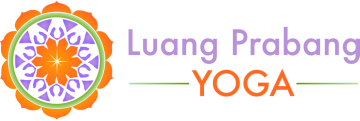
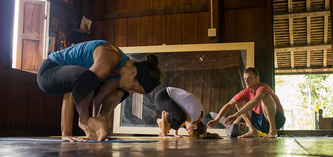


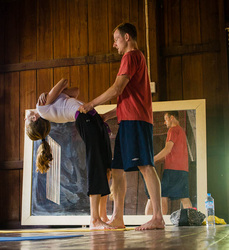


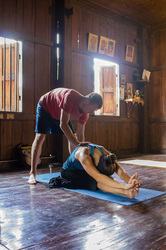


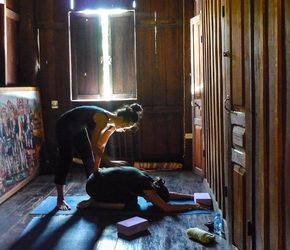







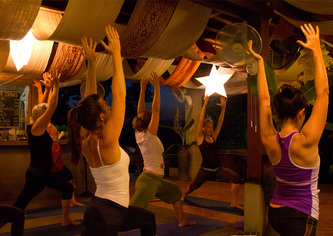
 RSS Feed
RSS Feed
